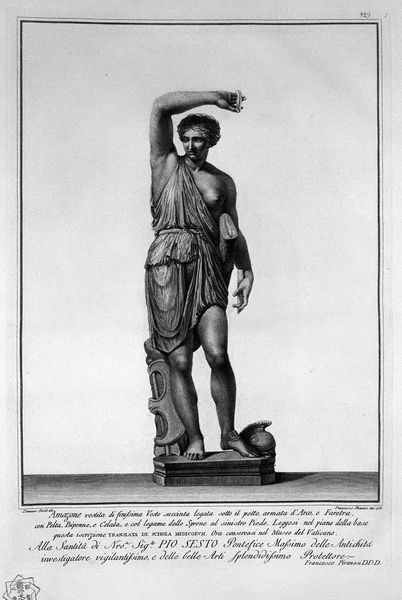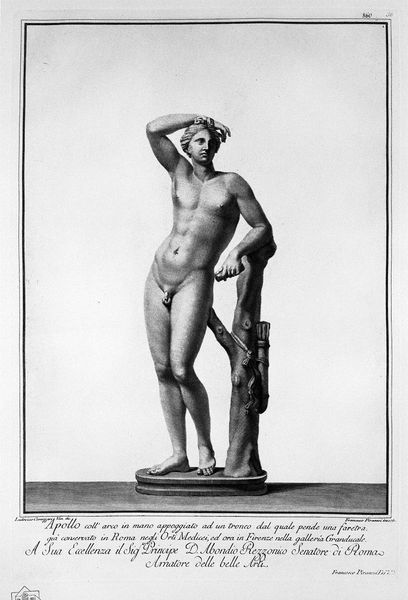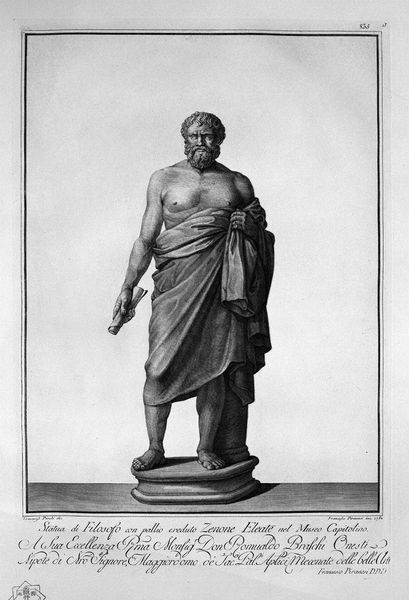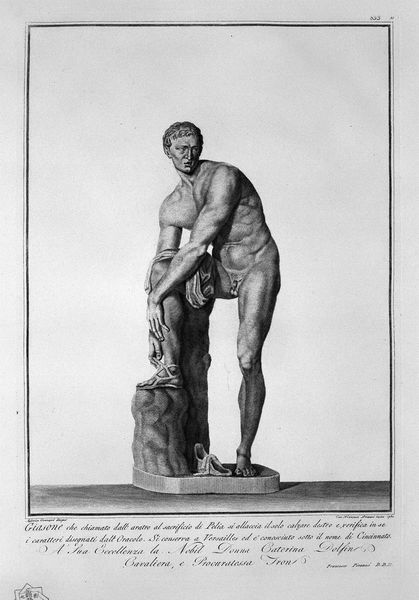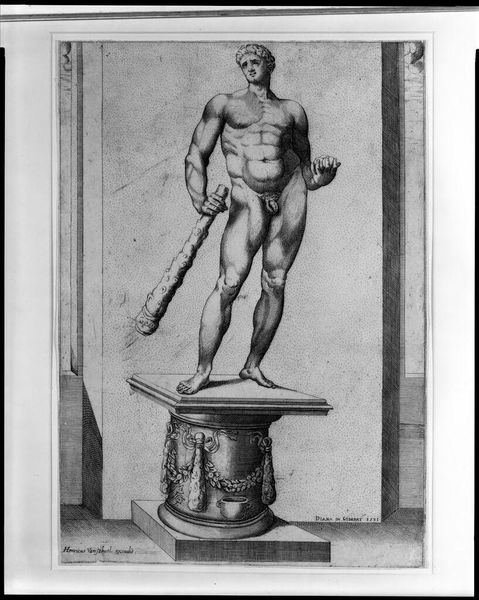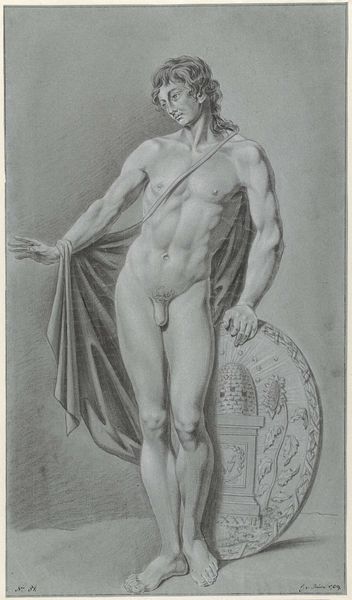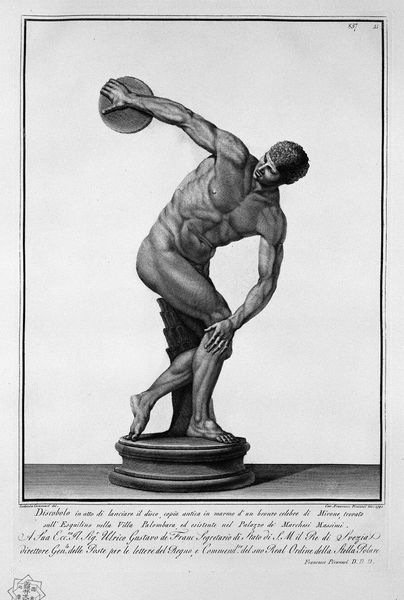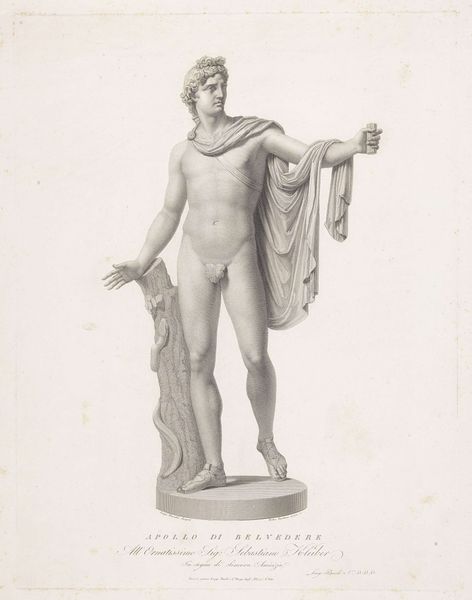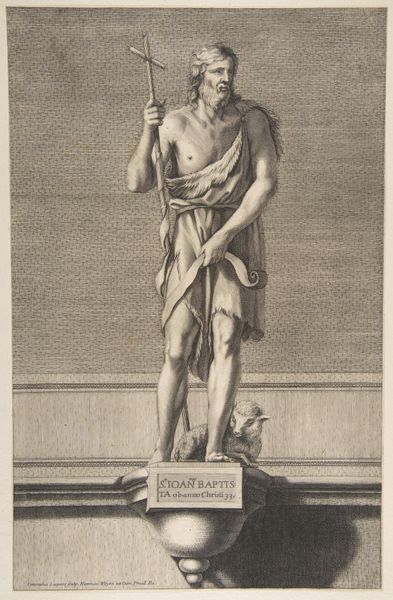
drawing, print, sculpture, engraving
#
drawing
#
neoclacissism
#
statue
# print
#
charcoal drawing
#
form
#
sculpture
#
line
#
history-painting
#
nude
#
engraving
Copyright: Public domain
Editor: Here we have Giovanni Battista Piranesi's "Apollo Belvedere" presented as a print, showcasing the famous marble sculpture. I’m immediately struck by its stark linearity; it almost feels like an architectural rendering rather than a representation of the human form. What do you see in this piece? Curator: Beyond the surface representation, I see a potent visual statement embedded within a complex web of power dynamics. Piranesi, known for his dramatic architectural prints, here appropriates the celebrated Apollo Belvedere. We must consider Neoclassicism's role in constructing ideas about beauty, civilization, and authority. The statue embodies ideals of masculine perfection, rationality, and control--ideals that historically have been used to marginalize and oppress other bodies and forms of knowledge. Doesn't Apollo's unwavering gaze strike you as imposing? Editor: Yes, I can see that now. It's not just about ideal beauty; it’s also about projecting power. The unblemished physique and confident stance definitely reinforce a certain narrative. So, this image, as a reproduction, is further propagating that narrative? Curator: Exactly! Printmaking allowed for the wide dissemination of these ideals. How does situating this work in the context of colonialism, or even the emergence of scientific racism, affect your interpretation? Think about who was included and excluded from these definitions of “ideal” humanity. Editor: I never considered the image in this context. The print, rather than merely being an aesthetic piece, seems like a cultural tool used to assert dominance and control based on a very specific vision of beauty and civilization. Curator: Precisely! And by analyzing the visual language and historical context, we can challenge those historical power dynamics perpetuated by this image. Editor: It definitely adds a critical layer to my understanding of not just the artwork, but the whole Neoclassical movement. Thank you.
Comments
No comments
Be the first to comment and join the conversation on the ultimate creative platform.


